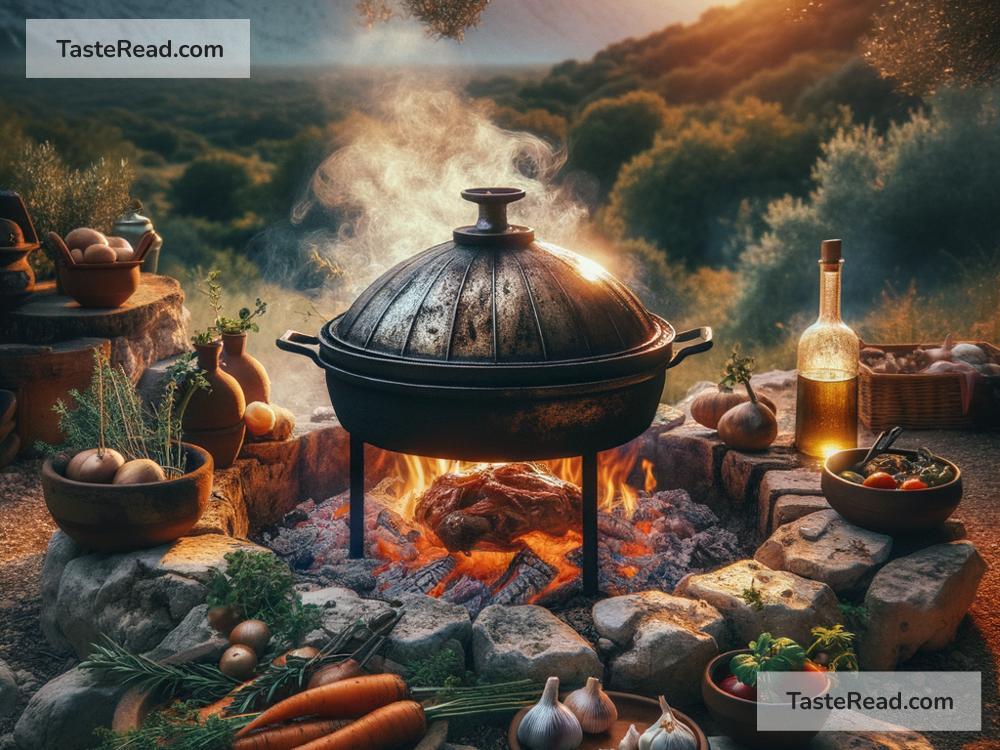Discovering Croatian Peka: A Timeless Tradition Passed Down Through Generations
Croatia is a country brimming with history, beautiful landscapes, and mouthwatering food. Among its many culinary treasures, one traditional dish stands out for its simplicity, flavor, and connection to nature: the peka. The centuries-old cooking technique used to prepare peka dishes has been passed down through families, preserving a delicious piece of Croatian culture. Let’s dive into the story behind peka cooking and explore why this tradition remains beloved today.
What is Peka?
Peka isn’t just a dish—it’s a method of cooking that brings food to life with rich, smoky flavors. At its core, peka refers to the use of a large bell-shaped lid, usually made of iron or clay. The food is placed in a shallow dish, such as a roasting pan or a flat tray, and covered with this heavy lid. The entire setup is then buried under hot embers and coals, allowing the food to cook slowly and evenly.
The beauty of peka lies in its simplicity. There’s no need for fancy equipment, and the ingredients are left to develop their natural flavors. This rustic cooking style honors the connection Croatians have with the land and their ancestors, who relied heavily on fire-based cooking methods.
The History of Peka Cooking
Peka cooking has been practiced in Croatia for hundreds of years. It originates from the Dalmatian region, where people adapted to cooking with wood-fired ovens and open flames. Before modern kitchens, families relied on hearths and outdoor fire pits to prepare their meals. Peka allowed food to cook slowly, requiring little attention, which made it ideal for busy households.
Generations of Croatians have passed down the techniques and recipes from grandparents to parents to children. While the modern kitchen has introduced new gadgets and methods, peka remains a cherished tradition. It’s not just a way to cook—it’s a cultural experience that connects people to their heritage.
The Essentials of Peka Cooking
Peka recipes emphasize freshness and simplicity, reflecting Croatian values of natural, wholesome ingredients. While specific peka dishes vary from region to region, the essentials remain the same: vegetables, herbs, olive oil, and protein, typically meat, fish, or poultry.
The meat is often marinated in olive oil, garlic, and herbs such as rosemary, parsley, or bay leaves. Vegetables like potatoes, carrots, and onions are added, soaking up all the flavorful juices. Sometimes people will include tomatoes, peppers, or squash as well. To add a unique Croatian twist, cooks often sprinkle the food with salt or paprika.
Once all the ingredients are placed in the roasting pan, the heavy lid is covered with fire-hot embers. The slow cooking process can take anywhere from 2 to 4 hours, depending on the type of meat being used. During this time, the flavors meld, creating tender meat and caramelized vegetables that practically melt in your mouth.
Famous Peka Dishes
Although the peka method can be used to cook almost any type of food, a few dishes stand out as favorites.
-
Lamb Peka: Croatia is known for its incredible lamb dishes, and lamb cooked under the peka is one of the best. The meat becomes incredibly tender, while the vegetables absorb the juices and smoky flavor. This dish often makes an appearance at family gatherings and celebrations.
-
Veal Peka: Another popular option is veal. The delicate meat is marinated to perfection and cooked slowly, creating a hearty yet refined dish.
-
Octopus Peka: For seafood lovers, octopus is an amazing choice. Cooked along with potatoes, garlic, olive oil, and herbs, this dish is a true showcase of Croatia’s connection to the sea.
-
Vegetarian Peka: While meat is a traditional favorite, vegetarians can enjoy peka as well. A mix of seasonal vegetables cooked under the lid provides the same smoky richness and depth of flavor as the meat-based versions.
The Social Aspect of Peka Cooking
Peka isn’t just about the food—it’s also about the experience. Cooking peka is often a social activity, bringing family and friends together. The process of lighting the fire, preparing the food, and waiting for it to cook creates moments for laughter, storytelling, and bonding.
In Croatia, it’s common to see families gathering in the courtyard or near outdoor ovens to make peka on special occasions. Whether it’s a wedding, a birthday, or a weekend with loved ones, peka transforms meals into memories.
Keeping the Tradition Alive
Even in today’s fast-paced world, peka cooking continues to thrive. Many restaurants in Croatia feature peka dishes on their menu, giving visitors the chance to taste this iconic tradition. Tourists often fall in love with its flavors and simplicity, creating a newfound appreciation for Croatian culture.
At home, Croatians keep the tradition alive by passing down recipes, techniques, and stories. While some have adapted peka to use modern ovens for convenience, many people still honor the original method—using wood-fired ovens or open flames.
Conclusion
Croatian peka cooking is more than just a way to make delicious food; it’s a celebration of culture, nature, and family. This centuries-old tradition reflects the heart and soul of Croatia, connecting generations and bringing people together around the table. Whether you’re enjoying lamb, octopus, or vegetables cooked under the peka, you can taste the love and care that goes into every dish.
Next time you visit Croatia or try your hand at peka cooking at home, take a moment to appreciate the stories, flavors, and heritage behind this timeless tradition. With every bite, you’re tasting the spirit of Croatia—passed down, one generation at a time.


